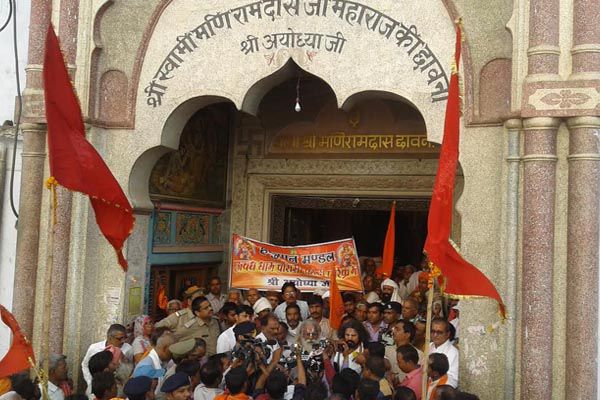Ayodhya, located in the northern Indian state of Uttar Pradesh, is a city with deep historical and cultural significance. While it is primarily known for its association with the birthplace of Lord Rama, there are several other Tourist Attraction In Ayodhyas and places of interest in and around Ayodhya. Here are some notable ones
Ram Janmabhoomi Temple: This is the most significant religious site in Ayodhya, believed to be the birthplace of Lord Rama. The temple complex includes the main Ram Janmabhoomi shrine and attracts pilgrims and tourists alike.
Hanuman Garhi: A prominent temple dedicated to Lord Hanuman, it is situated on a hill and offers panoramic views of Ayodhya. The temple is known for its vibrant religious atmosphere.
Kanak Bhavan: This temple is dedicated to Lord Rama and his wife Sita. It is believed to be a gift from Rani Kaikeyi to Sita on her wedding and is known for its beautiful architecture.
Treta Ke Thakur: This temple is dedicated to Lord Rama and is considered to be one of the ancient shrines in Ayodhya.
Nageshwarnath Temple: Dedicated to Lord Shiva, this temple is believed to be the first temple established by Lord Rama in Ayodhya.
Guptar Ghat: This is a sacred bathing ghat on the banks of the Sarayu River. It is believed that Lord Rama took a dip here during his stay in Ayodhya.
Swarg Dwar: Translated as "Gateway to Heaven," this is a significant site believed to be the spot where Lord Rama is said to have entered heaven.
Choti Chhavani: It is a beautiful garden and a popular spot for locals and tourists alike to relax.
While Ayodhya is primarily known for its religious significance, the city also offers a glimpse into India's rich history and culture. Visitors can explore these sites to immerse themselves in the spiritual and historical heritage of the region. Additionally, the state of Uttar Pradesh has other attractions nearby, such as Varanasi, Allahabad, and Lucknow, each with its own unique cultural and historical importance.
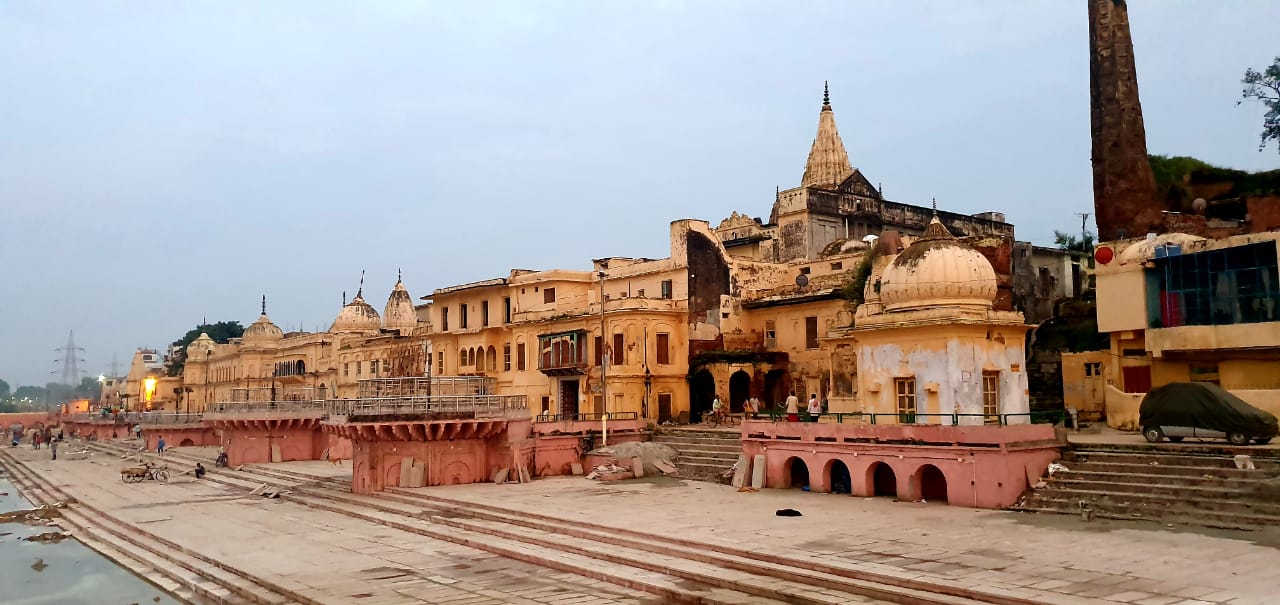
Hanuman Garhi is a temple dedicated to Lord Hanuman, located in Ayodhya, Uttar Pradesh, India. Ayodhya is a significant city in Hinduism as it is believed to be the birthplace of Lord Rama, and it holds immense religious and cultural importance.
Here are some key points about Hanuman Garhi:
Location: Hanuman Garhi is situated in the heart of Ayodhya, near the central part of the city. It is positioned on a mound, and devotees have to climb a series of stairs to reach the temple.
Architecture: The temple has a unique architectural style and is known for its strong fortress-like appearance. The word "Garhi" means fortress in Hindi, and the temple is named Hanuman Garhi due to its fort-like structure.
Deity: The primary deity of Hanuman Garhi is Lord Hanuman, a revered figure in Hinduism known for his unwavering devotion to Lord Rama. Devotees visit the temple to seek blessings and protection from Lord Hanuman.
Religious Significance: Hanuman Garhi is considered a sacred place for Hindus. It is believed that Lord Hanuman resided at this spot to guard the city of Ayodhya. Devotees often visit the temple to offer prayers, especially on Tuesdays and Saturdays, which are considered auspicious days for worshipping Lord Hanuman.
Festivals: The temple attracts a large number of devotees during festivals like Hanuman Jayanti, which marks the birth of Lord Hanuman. During these times, the temple is decorated, and special prayers and rituals are conducted.
View of Ayodhya: Due to its elevated location, Hanuman Garhi provides a panoramic view of Ayodhya. Pilgrims often climb to the top not only for religious reasons but also to enjoy the scenic surroundings.
Hanuman Garhi is an essential pilgrimage site for devotees of Lord Hanuman and those visiting Ayodhya. The temple reflects the rich cultural and religious heritage of the region and is an integral part of the spiritual landscape of Ayodhya.
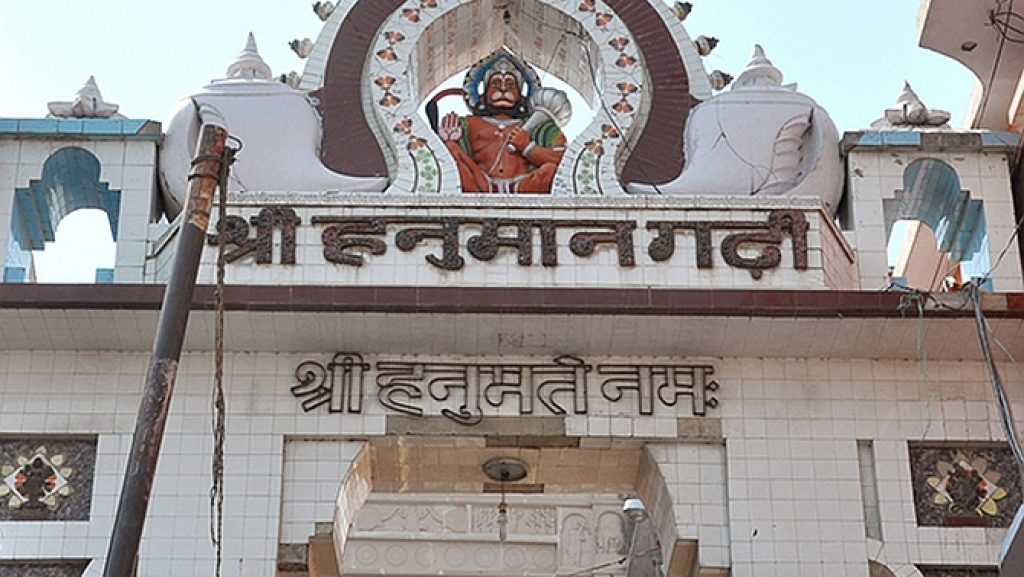
Kanak Bhavan is a significant religious and historical site located in Ayodhya, Uttar Pradesh, India. The name "Kanak Bhavan" translates to "Golden House" in English. This sacred structure holds cultural and religious importance, particularly in the Hindu tradition.
The history of Kanak Bhavan is closely associated with the epic Ramayana. According to Hindu mythology, it is believed to be the palace gifted to Sita by Lord Rama's stepmother, Queen Kaikeyi, during their wedding. The name "Kanak Bhavan" reflects
the opulence and grandeur of the palace, symbolizing the wealth and prosperity associated with Lord Rama and Sita.
One notable feature of Kanak Bhavan is the presence of idols of Lord Rama and Sita, which are revered by devotees who visit the site. Pilgrims often come to seek blessings and offer prayers in this sacred place, considering it as a symbol of the divine union of Lord Rama and Sita.
Kanak Bhavan stands as a testament to the rich cultural and religious heritage of Ayodhya, attracting devotees and tourists alike who come to witness the historical and spiritual significance embedded in this revered structure.
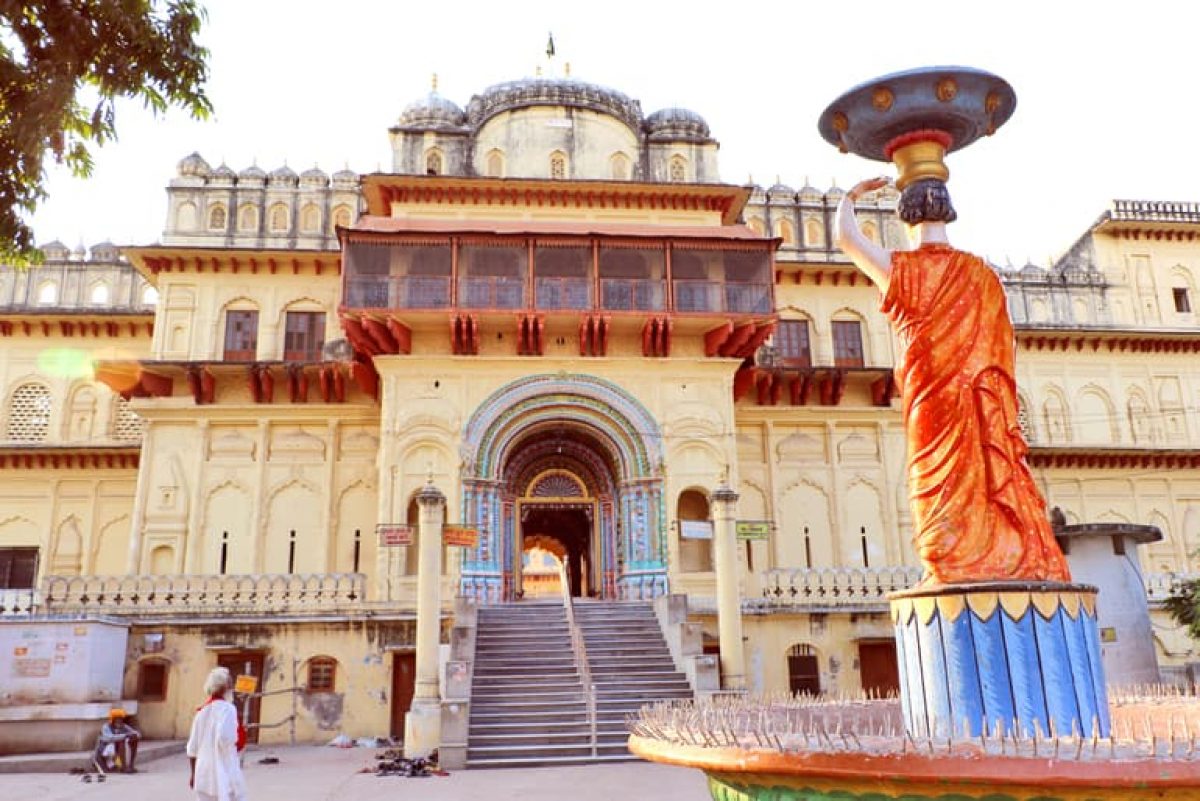
Located 2.5 km away from Ayodhya Junction along the Naya Ghat, the Treta Ke Thakur or Tretanath Temple stands as a prominent Hindu temple on the banks of Sarayu Ghat. It is a must-visit destination during your Ayodhya tour.
Dedicated to Lord Rama, known as the Lord of the Treta Yuga, the Treta ke Thakur Temple is among Ayodhya's renowned temples. Constructed by the king of Kullu 300 years ago, it underwent renovation in 1784 AD under the patronage of Maratha queen Ahilyabai Holkar. The temple holds significant religious importance, serving as the site where Lord Rama performed the 'Ashwadmedha Yagya' to mark his triumph over Ravana.
Exhibiting exemplary north Indian Nagar-style Hindu temple architecture with traditional 'shikharas,' the Treta Ke Thakur Temple shelters idols of Lord Rama, Goddess Sita, Lakshman, Bharat, Shatrughan, Lord Hanuman, and Sage Vashishtha. The black idols, crafted from a single black sandstone, are believed to have been transferred from the original temple situated on the banks of the River Saryu.
The Treta Ke Thakur Temple opens its doors to devotees only once a year during Kartik Shukla Ekadashi, typically falling in October or November. On this day, the gates remain open for 24 hours, attracting a large number of devotees who gather to celebrate Kartik Shukla Ekadashi.
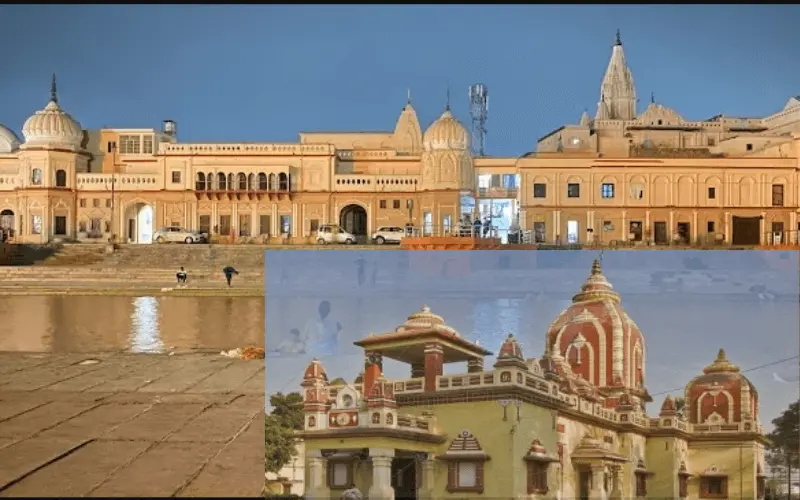
The Nageshwarnath Temple is a revered Hindu temple situated in Ayodhya, Uttar Pradesh, India. It is dedicated to Lord Shiva and is considered one of the ancient and significant temples in the sacred city of Ayodhya.
Dedication to Lord Shiva:1. The primary deity of the Nageshwarnath Temple is Lord Shiva, one of the principal deities in Hinduism. Lord Shiva is worshipped here in the form of Nageshwarnath, which translates to "Lord of the Nagas" or "Serpents."
Mythological Significance:2. According to Hindu mythology, it is believed that the presiding deity, Nageshwarnath, protects Ayodhya from the influence of serpents. Devotees visit the temple to seek the blessings of Lord Shiva and to ward off any ill effects associated with snakes.
Architectural Style:3. The temple showcases traditional North Indian temple architecture. It may have undergone renovations and modifications over the centuries, reflecting a blend of historical and architectural influences.
Religious Festivals: 4. The temple attracts devotees throughout the year, with special significance during the festival of Shivratri when elaborate rituals and celebrations take place. During this time, devotees gather to offer prayers and seek the divine blessings of Lord Shiva.
Historical Significance: 5.Ayodhya, with its rich history and religious significance, is believed to be the birthplace of Lord Rama. While much attention is given to the Ram Janmabhoomi, the Nageshwarnath Temple adds to the historical and religious fabric of the city.
Local Beliefs:6. The temple is associated with various local beliefs and legends. It holds a unique place in the hearts of the local population, and devotees consider it an important pilgrimage site.
As Ayodhya is a city with deep-rooted cultural and religious heritage, the Nageshwarnath Temple contributes to the spiritual ambiance of the region. Visitors to Ayodhya often include this temple in their itinerary to experience the diverse religious and historical sites the city has to offer.
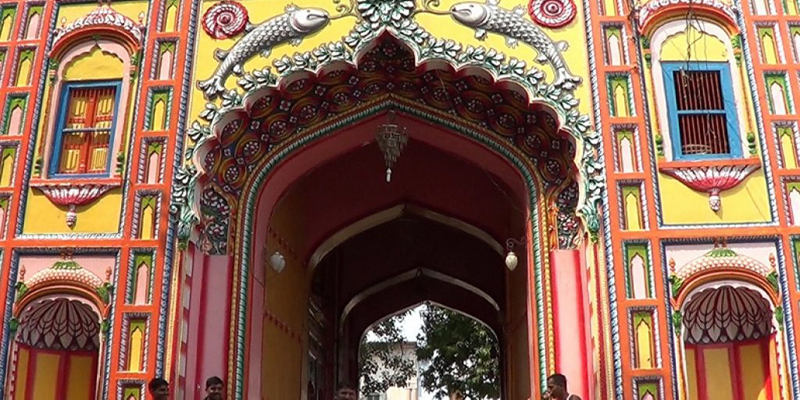
Guptar Ghat is a prominent ghat (steps leading down to a river) situated along the sacred Sarayu River in Ayodhya, Uttar Pradesh, India. The term "Guptar" is derived from the belief that Lord Rama, during his exile, meditated in a cave hidden at this ghat. Here are some key aspects of Guptar Ghat:
Cave of Lord Rama:Guptar Ghat is especially known for the cave where Lord Rama is believed to have performed meditation (tapasya) during his 14 years of exile. This cave is considered to be the spot where Lord Rama temporarily concealed himself.
Ramayana Connection:The association with Lord Rama makes Guptar Ghat a site of considerable significance in the Ramayana, the ancient Hindu epic. It is said that Lord Rama stayed in this hidden cave to maintain his anonymity during his exile.
Pilgrimage Site: Devotees and pilgrims visit Guptar Ghat to offer prayers and seek blessings. The ghat attracts believers who wish to connect with the spiritual energy associated with Lord Rama's presence in the cave.
Religious Ceremonies:Various religious ceremonies and rituals take place at Guptar Ghat, particularly during festivals and auspicious occasions.
Deepotsav:Ayodhya, being a significant religious destination, celebrates festivals like Deepotsav (Festival of Lights) with fervor, and Guptar Ghat may witness special ceremonies during such events.
Historical Roots: Guptar Ghat, along with other ghats along the Sarayu River, contributes to Ayodhya's cultural and historical heritage. These ghats are an integral part of the city's religious landscape.
Sacred River: The presence of Guptar Ghat along the banks of the Sarayu River adds to the spiritual ambiance. The Sarayu is considered a sacred river in Hinduism, and its waters are believed to have purifying properties.
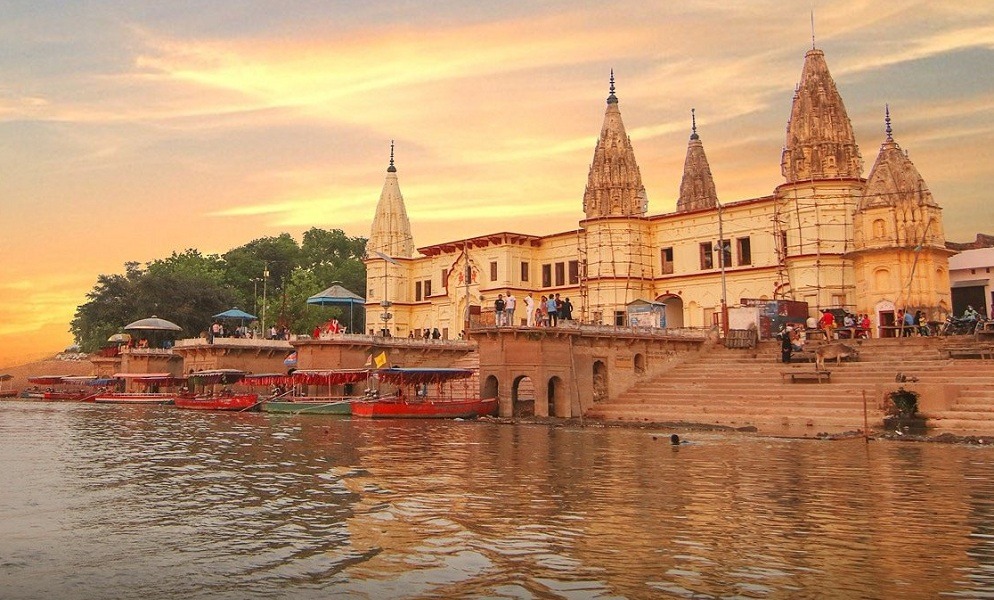
The Swarg Dwar area in Ayodhya typically refers to the stretch of land from Sahasradhara to the Nageshwarnath Temple, often regarded as the Gateway to Heaven in Ayodhya. Along the banks of the Sarayu River, one can witness buildings, and the area is known for its historical and architectural significance.
In the 18th century, these buildings were primarily constructed during the court of Raja Safdar Jung, under the patronage of Hindu Nawab Naval Rai. The structures along the ghats are visually stunning, offering a glimpse of the rich heritage. The river's course has shifted northward, and during the 1960s, new ghats were constructed in the vicinity of the new bridge, providing a picturesque view.
Prominent temples near this ghat include the Ram Temple and the Bade-Narayan Temple. Additionally, the Kal Ganga and Tamra Varaha Kshetra are considered sacred pilgrimage sites. The Sang Ved School, renowned for Vedic studies, is also situated nearby, hosting special celebrations during Lord Rama's birthday.
Several historical and famous mathas and temples surround this ghat area. About 15,000 homes, featuring more than 60 lanes, have been constructed near Ram Ki Dharamshala. Efforts are underway to develop the Swarg Dwar area into a heritage site. A UNESCO team has identified the vicinity around the Nageshwarnath Temple as one of the spiritual energy spots.
Apart from the ghats, there are numerous temples along the riverbank, including the Surya Mandir and the Nageshwarnath Temple, both highly revered. Other significant sites in the vicinity include the Kaleram Temple, Chandrhari Mahadev Temple, Sheshavatar Temple, Sahasradhara Ghat, Sarayu Temple, and Hanumat Sadan. The area is rich in historical and mythological significance, featuring the Chaturbhuj Temple and the Vidhiji Temple.
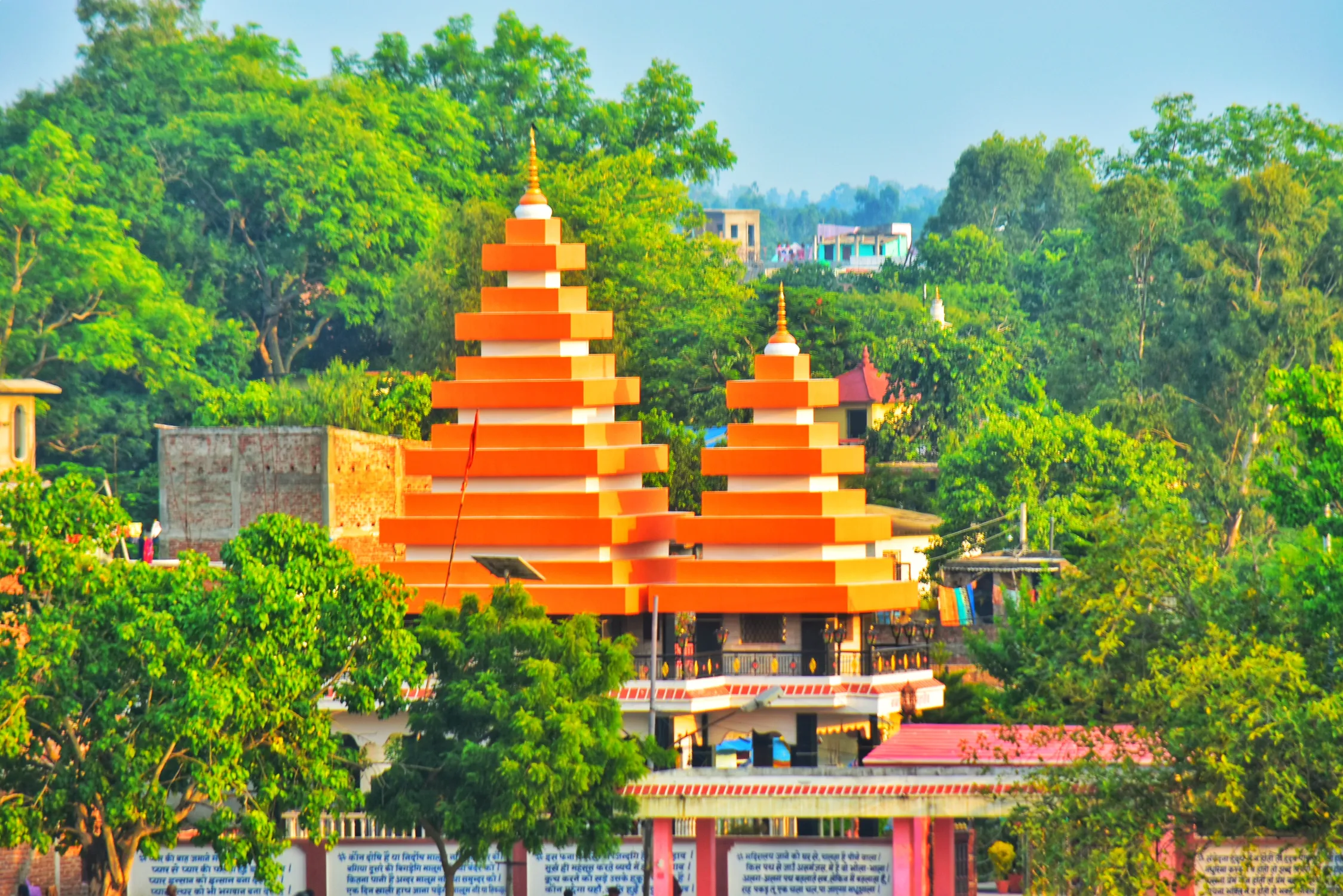
Choti Chhavani, also known as Maniramdas Chhavani and Valmiki Bhavan, stands as a magnificent structure in Ayodhya. Entirely crafted from pristine white marble, this architectural marvel is adorned with intricate details. Often referred to by different names, it is a notable location in the city.
Choti Chhavani boasts 34 caves within its precincts, adding to the grandeur of the site. The caves contribute to the historical and cultural significance of the place, providing a glimpse into the rich heritage of Ayodhya.
Notably, the site houses the Ram Artiyan, enhancing its spiritual ambiance. At the heart of Choti Chhavani resides Mahant Shri Shri 1008 Mahant Shri Nritya Gopal Das Ji, further adding to the sacredness of the place. The presence of revered figures contributes to the spiritual aura of Choti Chhavani, making it a destination of significance for devotees and visitors alike.
Ayodhya, renowned for its ghats and temples, is nestled along the banks of the Sarayu River, with 14 prominent ghats gracing its shores. The city is steeped in religious and cultural heritage, and it is said to house approximately 7,000 temples, though around 100 are considered of significant importance. Each temple and ghat carries its unique history and spiritual significance, contributing to the rich tapestry of Ayodhya's cultural landscape.
In conclusion, Choti Chhavani in Ayodhya stands as a testament to the city's cultural and spiritual wealth, with its splendid architecture, caves, and association with revered figures making it a place of reverence and historical importance.
